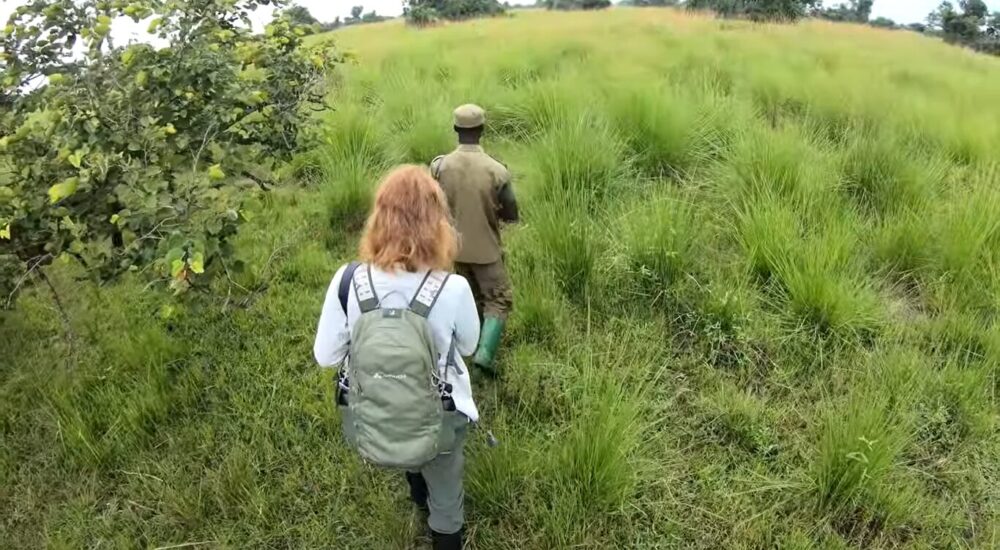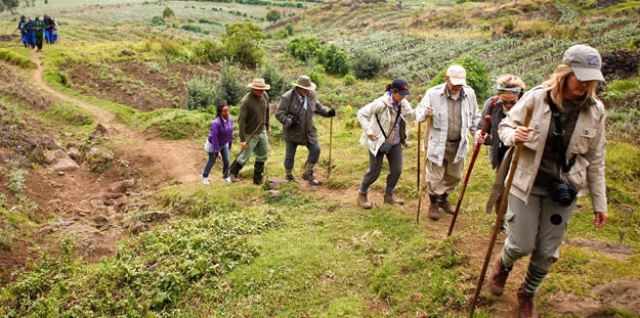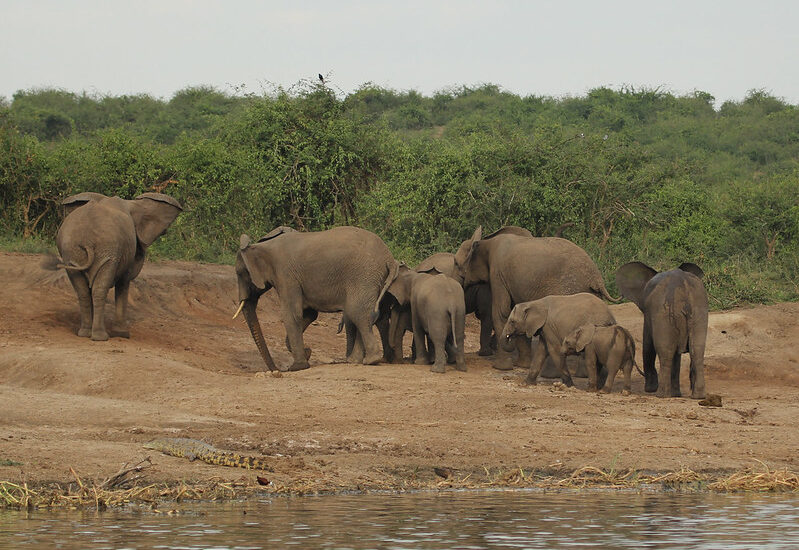Uganda, famously known as the Pearl of Africa, offers a diverse range of safari experiences,…
Mountaineering in Kenya
Mountaineering in Kenya, Kenya is the second-largest country in East Africa, covering an area of about 580,367 square kilometers and having a busy coastline on the Indian Ocean. The country has a beautiful environment with lots of wildlife, many lakes and rivers, and beautiful mountains that offer some of the best mountaineering in the area.
Kenya is one of the best places in East Africa to go mountain climbing. It has the second-highest hill in Africa, which is 5,199 meters high. Tanzania’s Mount Kilimanjaro is the continent’s tallest mountain and the largest mountain in Africa.
But the country also has many other volcanic, plateau, dome, fold, and block mountains spread out across its vast landscape. These mountains are popular with mountain climbers who want to feel what it’s like to conquer these beautiful ranges. Also, most of Kenya’s mountains are in National Parks, which make them great places to hike.
Spend time in the wild by hiking through savannah, afro-alpine moorland, heathland, and montane woods in search of waterfalls and views. A few of these peaks are Mount Kenya, Mount Elgon, Mount Longonot, the Aberdare Mountains, Mount Satima, and Mount Kinangop.
KENYA’S MOUNTAIN
The tallest mountain in Africa is Mount Kilimanjaro. The next tallest is Mount Kenya. Batian (5,199 meters), Nelion (5,188 meters), and Point Lenana are its three main and tallest hills. The mountain is in the central and eastern parts of Kenya.
It is said to have been named after the country of Kenya because it is so beautiful. The extinct volcano formed about 3 million years ago, not long after the East Rift Valley opened. It had only one center vent. Before going up this beautiful, snow-covered hill, hikers must be properly dressed. Usually, the air gets colder as you go up.
In addition to mountain climbing on these beautiful mountain ranges, Mount Kenya is in Mount Kenya National Park, which makes it a more interesting place to visit. You can go on nature walks, watch birds and animals, and go bird watching, to name a few. Over 15,000 people visit Mount Kenya every year, making it a good place to visit.
Most of these hikers only go to the lower peak, Lenana. But more skilled hikers can also go to the tops of Nelian and Batian, which are the next highest peaks. Seven different paths lead up Mount Kenya. These are Sirimon (northwest), Chogoria (southeast), Naro Moru (west), Burguret (west), Timau (north), Moru (east), and Kamweti (south). The Sirimon–Chogoria route takes about 6–7 days, and the Sirimon–Naro Moru route takes about 5 days. Most walkers do both at the same time.
The other ways are also less popular and can only be hiked with permission from the Kenya Wildlife Service. From December to March, when it is sunny and clear, is the best time to go climbing on Mount Kenya. The views are less clear from March to May and early December, when it rains and clouds up. On the other hand, you can climb Mount Kenya at any time of the year.
Mount Elgon
The shield volcano Mount Elgon is on the border between Uganda and Kenya, north and west of Kisumu. It is thought to be the oldest volcano in East Africa that has died out, at least 24 million years old. It is also the world’s biggest caldera. Kenya and Uganda both share this mountain. Its name comes from the Masai word for it, “Elgonyi.”
This mountain range has several peaks. The longest one, Wagagai (4,321 meters), is entirely in Uganda. Other peaks are Sudek (4,302 meters), which is in both Kenya and Uganda, Koitobos (4,22 2 meters), which is in Kenya, and Mubuyi (4,211 meters), which is in Uganda. Masaba is the highest point in Uganda. It is 4,161 meters high. With 3000 mm of rain falling every year, this area has a wet to fairly dry climate, making it a good place for water catchment.
Mount Elgon is a great place to go climbing because it has routes that are easy to follow but still hard. The most famous route for mountain hikers in Kenya is the Koitoboss route, which has views of both Kenya and Uganda. Even so, the other trails, like Sudek, Endebess Peaks, and Lower Elgon, are worth seeing, and you probably won’t get sick from the high altitude.
There is a national park called Mountain Elgon National Park on the Ugandan side of Mount Elgon. As a result, it is both a place to go mountain climbing and a safe home for many interesting and beautiful animal species.
Mountaineering in Kenya to this mountain will definitely give people a lot more than they expected because they will be able to see many bird species and the beautiful plants that grow around this scene. When it comes to traveling, the dry season is the best. It usually lasts from June to August or December to March.
Mountains of Aberdare
The high Laikipia Plateau and the easternmost wall of the Great Rift Valley are made up of these single volcanic hills. The range is about 100 kilometers long, running from north to south, and is in Aberdare National Park. The Aberdares have two main peaks: Kinangop (3,906 meters to the south) and Ol Donyo Lesatima (3,999 meters to the north).
There is a long saddle of land above 3000 meters that separates them. People in Kenya know that these mountains are the best places to go mountain climbing. Its smaller peaks, like Kipipiri (3,349), are to the west of the main range and are linked to it by a 2,700-meter valley that used to be forest.
Hill of Satima
This peak is the highest in the Aberdare Mountain Range and the third highest in Kenya. It is 4,001 meters high. Besides that, it’s also called Lesatima, which is shortened to Satima. Its Masai name is Oldoinyo Lesatima, which means “mountain of the bull calf.”
Hikers in this area can see the top of Mount Satima, the Aberdares, and the beautiful Great Rift Valley while they are mountain climbing. Hikers who take two hours to reach the top will see what are called “the dragon’s teeth,” which are a group of volcanic cones. The peaceful and impenetrable bamboo has been left open by elephants and buffaloes from the nearby Mount Kinangop National Park.
This makes it easy to get up and down these mountains. The beautiful volcanic cones and St. John’s Wort trees are also climbing highlights. The walk is worth it just to see them, and mountaineers keep going to see them.
Mount Kinangop
Mount Kinangop is in the southern Aberdare Mountains, 100 miles (160 km) north of Nairobi, Kenya. It is in Aberdare National Park. To the west, this inactive volcano looks out over the Great Rift Valley and the Kinangop Plateau. Mount Satima is the highest point in the Aberdares. Mount Kinangop is the next highest.
The volcano has tussock grasses on the higher parts of the mountain and big bamboo forests at the lower elevations. It is a popular place for adventurous mountaineering tours. It gets very cold at its main peak, which is 3,906 meters high, and it’s likely to get even colder at night. The main peak has amazing views of a granite rock covered in open moorlands.
The Elephant Hill route and the Mutarakwa Forest route are the two ways that mountain climbers can get to the top of this hill. Both routes are very exciting and hard on the body, but they are both worth the walk. Mount Kinangop is also in Aberdare National Park, which gives tourists the chance to do other fun things like see animals, birds, and so on.
The Aberdare National Park is open all year, but the best time to go climbing in these mountains is from December to March, during the dry season. This is because the steep slopes aren’t wet, which makes them easier to climb quickly.
Big Mount Longonot
Mount Longonot is one of the most famous places to go mountain climbing in Kenya. It is run by the Kenya Wildlife Service. The mountain is in Mount Longonot National Park, which is about 90 kilometers from Nairobi. It is a stratovolcano that is in Kenya’s Great Rift Valley. It is thought to have erupted last in the 1860s. The name comes from the Masai word “oloonong’ot,” which means “mountain of the spurs.”
Mountaineering tours here go up 3.2 kilometers of rough crater rim. The gate is only about 630 meters higher than the peak because the rim is so rough. The peak is 2,776 meters above sea level. You can also start a 7.2 km walk that goes around the edge of the crater. This is the best way to see the Rift Valley, Lake Naivasha, and Mount Longonot National Park.
The interesting plants and animals of Mount Longonot include a forest of tiny trees covering the crater floor and small steam vents all over the crater walls. There are also many kinds of animals, such as buffaloes, Thomas’s gazelles, plain zebras, hartebeest, and others. From December to March is the best time to visit this place.
Back to Hell’s Gate National Park
Hell’s Gate National Park is in northwest Nairobi, on the southern shore of Lake Naivasha. The old Nairobi-Naivasha Highway is about 14 kilometers away. The park is 68.25 square kilometers big and rises 1,900 meters above sea level. It was named after a small crack in the cliff that was made by two volcanic events. Because of a volcanic eruption, many gullies, rims, and beautiful rocks were made, making it one of the most beautiful places in Kenya to visit.
People love Hell’s Gate National Park even though it’s not very big because of its beautiful scenery of rocks and high hills. Because of this, a lot of hikers are motivated to go rock climbing along this area to see the unique features of the park. There are two extinct volcanoes, paths made of obsidian from cool molten lava that are worth the walk, the center tower, Fischer’s Tower, and a lot more.
One great way to see Hell’s Gate is on the Ol Njorowa Gorge walk. The road goes down into a smaller gorge to the south, where there are hot springs. On these hikes, you can see lions, leopards, cheetahs, and over 103 bird species, such as verreaux’s eagles, augur buzzards, vultures, and others.
Hell’s Gate National Park is close to Nairobi, which makes it easy to get to. It’s also the best place for hiking and climbing because it has the lowest park entrance fees. But you can also do other things here, like camping, motorbiking, and riding.
If you want to see Hell’s Gate without getting wet, the best time to go is from June to March. During the rainy season, it might be hard to go rock climbing because the paths are muddy and slippery.
Mountain climbing in Kenya’s Menengai Crater
Menengai Crater is 10 kilometers north of Nakuru-Kenya. It is the biggest volcano caldera in Kenya and the second largest in Africa. The great lift valley is home to one of the world’s biggest calderas, which is part of a huge shield volcano. The crater was formed about 200,000 years ago and is on the flow of the Great Rift Valley. It has rich loam soils that were made by volcanoes and help the farmlands that are next to it.
A shield volcano called Menengai has runny lava that makes the area about 500 meters wide and 12 kilometers across from the rim to the floor of the crater slightly slope. From the point of view, this place has always been the pride of Nakuru’s visitor attractions, with its lush green landscapes, plants, and animals that can be seen from above. This makes people want to go hiking here.
The great guerrillas hide in the Mau Mau cave on the west side of the crater. This is because of an old story about defeated Maasai fighters who rose up against the British colonial rulers and forced the guerrillas to hide. But with the help of a knowledgeable guide, it is possible to learn about and live with these animals that look like humans. This is one of the best places to walk, and it’s best to do it with a group and a good local guide. The crater is most beautiful from July to October, but you can come any time of the year.
For people who like to go mountain climbing as part of their Kenya trips, Kenya is without a doubt the best place to go. The most exciting mountain climbing will happen on its beautiful mountains and valleys, starting with Africa’s second-biggest mountain. Mountain climbers should also have the chance to see many other amazing things about Kenya, like the wildlife and the people who live there.


